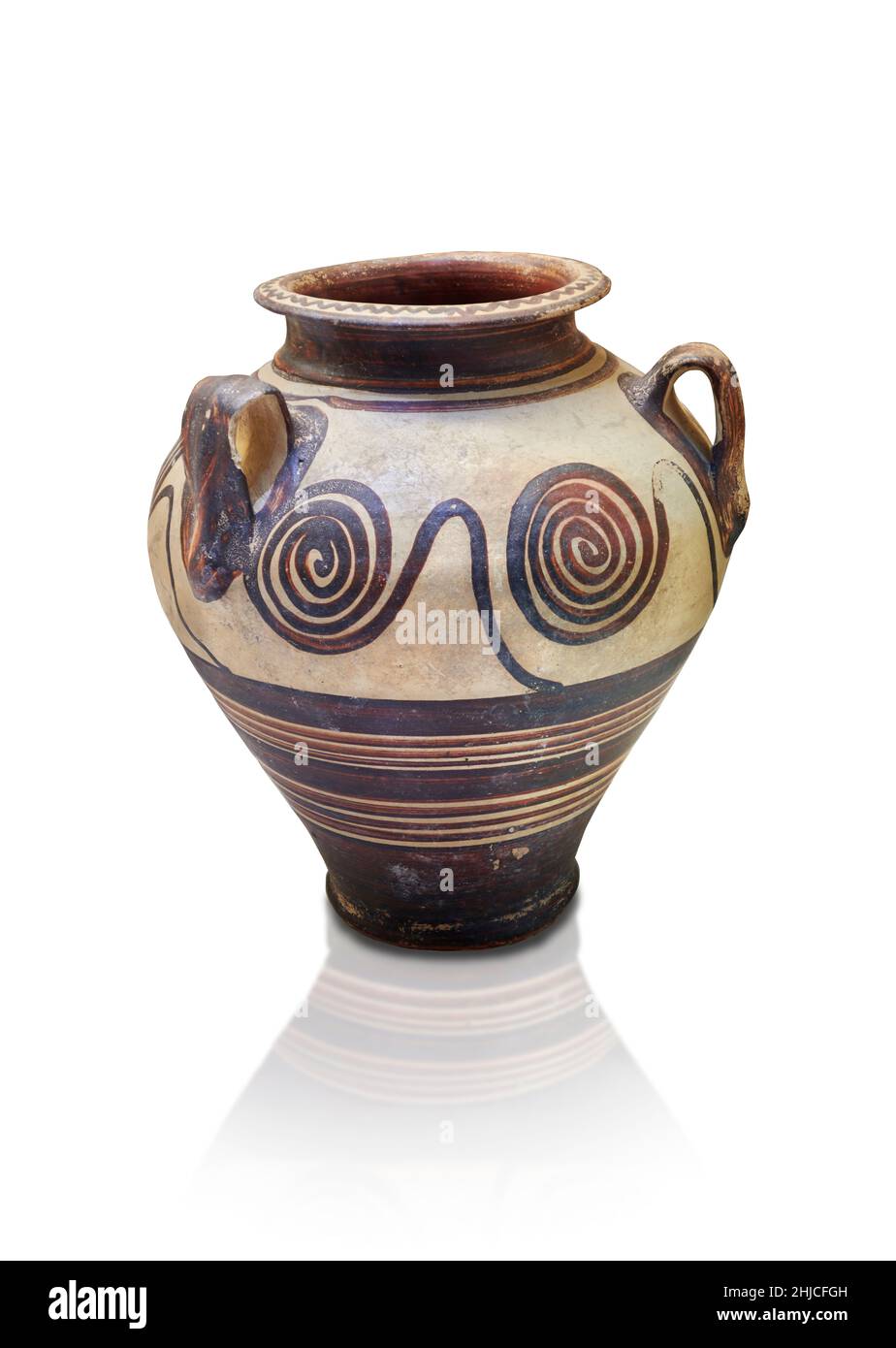Mycenaean pottery - Terracotta periform palace style jar with swirl design . 1400-1300 BC. Mycenaean Epidauros necropolis. Nafplio Archaeological Mus

Image details
Contributor:
funkyfood London - Paul Williams / Alamy Stock PhotoImage ID:
2HJCFGHFile size:
186.2 MB (3.1 MB Compressed download)Releases:
Model - no | Property - noDo I need a release?Dimensions:
6803 x 9566 px | 57.6 x 81 cm | 22.7 x 31.9 inches | 300dpiDate taken:
9 March 2023Location:
Napflion Archaeological Museum. GreeceMore information:
Mycenaean pottery - Terracotta periform palace style jar with swirl design . 1400-1300 BC. Mycenaean Epidauros necropolis. Nafplio Archaeological Museum. . Against white background. Photographer Paul E Williams. The Mycenaean cemetery at Palaia Epidauros has numerous Mycenaean chamber tombs that were used from the 15th to the 11th cent BC. The chamber tombs have a typical descending passageway to to entrance (dromo) into a rectangular or circular chamber (thalamoi). The entrance is sealed with a dry masonry wall. Up to three succeeding generations of various families were buried here. The most common Mycenaean archaeological finds are examples of Mycenaean pottery. The potter's wheel was developed in the Near East around 3500 BC and 2000 years later, during the Late Helladic period, Mycenaeans adopted it. This led the Mycenaeans to produce fine pottery with hand painted decorations that was exported throughout the eastern Mediterranean. Mycenaean decorations are a continuation of the styles used by the earlier Minoans of Crete. Popular deigns were floral patterns, marine and octopus designs and swirling circular designs. The Mycenaeans were a Bronze Age Culture found primarily in mainland Greece in city states such as Thebes, Mycenae and Tiryns. The Mycenaean civilisation spanned the period from approximately 1750 to 1050 BC and ended abruptly during the collapse of Bronze Age culture in the eastern Mediterranean, to be followed by the so-called Greek Dark Ages.